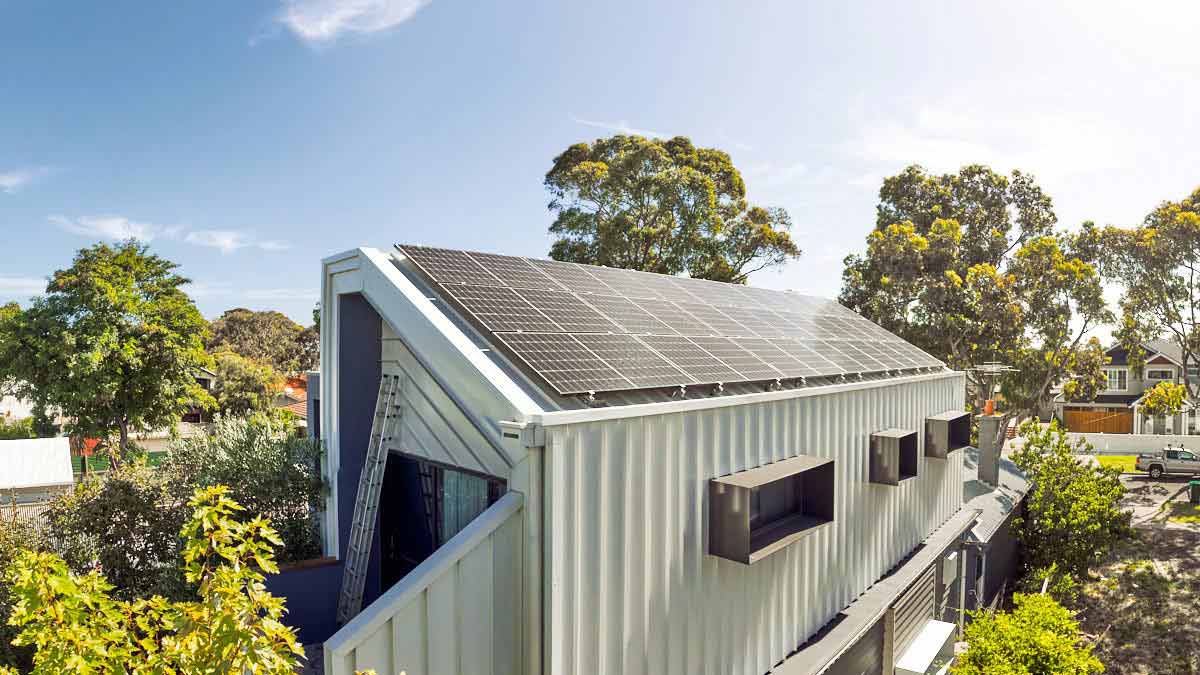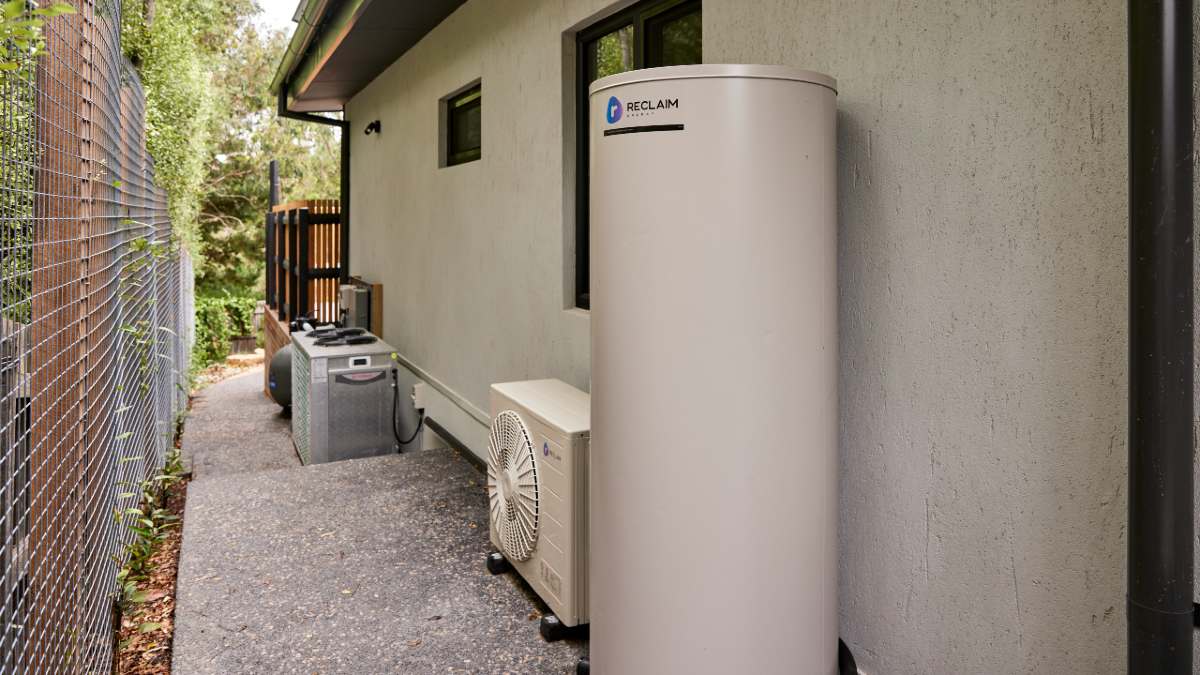Use these energy saving tips to help reduce electricity consumption (and your bills) when renting a house or apartment.
Power-saving tips and upgrades to reduce your home energy bills

Discover easy, effective ways you can cut your power costs, from installing LED lights and better appliance settings, to solar panels and insulation upgrades.
Receiving an energy bill that’s higher than expected can be unpleasant. Even if you haven't experienced the pain of bill shock, decreasing your family's energy usage is one of the easiest and most effective ways to reduce your household expenditure and put a few extra dollars back into your budget.
There are plenty of savings to be had too, with a number of quick and easy things you can do around the home, from DIY fixes to simple behavioural changes. Or, if you're looking to make an investment in energy saving, there are renovations and home upgrades that can put a serious dent in your annual usage costs.
How to save energy and reduce your power bills
Why are my energy bills so high?
Receiving an unexpectantly high bill can happen for a number of reasons. These include:
- Seasonal changes. Very cold or very hot weather can increase your energy usage, especially if you are relying solely on appliances to heat your home.
- Poor insulation. Houses without proper insulation or with gaps in windows and doors cost more to heat or cool.
- Old appliances. Energy efficient technology is continously improving so don't expect a 20-year-old heater or those last few incandescent lightbulbs you've got to run as efficiently as their newer counterparts.
- Badly maintained appliances. Regular services help keep appliances like heaters running most efficiently.
- Lifestyle changes. If a new housemate has moved into your rental, you've had a baby, or started on a home reno, don't be surprised if you see a consequent rise in energy use.
- Your energy plan. If you're using lots of home appliances during peak periods on a Time of Use tariff then you can expect to pay more.
- Estimated bills. Check your bill to see if an actual or estimated meter read was conducted. An estimated read may be higher than your actual usage, and you can correct this by contacting your provider.

Reading and understanding your energy bills is the first step in finding any potential savings, such as switching to better plan for your circumstances.
Quick and easy ways to reduce your energy bills
Wash your clothes in cold water
When it comes to washing your clothes, using hot water costs more, and can speed up the deterioration of fabrics, cause colours to fade and increase the likelihood of shrinking.
Switching to a cold wash can cut energy use by up to 80 per cent according to Sustainability Victoria. New washing machines are also often equipped with an ‘eco’ wash program which reduces power consumption by automatically using a colder water temperature and low-energy spin cycle.
Save your hot washes for items like heavily soiled clothing, towels and bedding.
Related reading: Are front or top loader washing machines better?
Use a clothes airer instead of clothes dryer
Clothes dryers can be useful, but a clothes airer or good old-fashioned washing line can work just as well without using additional energy.
If you must use a clothes dryer, try to use it most efficiently. That means wringing your washing out using your washing machine’s spin cycle first, keeping the filters clean (also important for home fire safety) and putting the correct amount of drying in per cycle – filling the drum half full is a good general guide.
Purchase an energy monitor
An energy monitor can help you track your energy consumption through the day and identify opportunities to save on energy, such as undertaking some household tasks at off-peak times.
These devices typically plug into your electricity meter and can cost as little as $20. When purchasing an energy monitor, look for models that displays energy usage in kilowatt hours (as this is what is shown on your bills), as well as multiple appliance input, energy usage history and non-volatile memory. Wireless capabilities are convenient too.
Some energy providers may also offer discounted usage rates during ‘off-peak’ periods when typical use is often lower, thus placing less strain on the grid. Running energy-thirsty appliances like washing machines during these off-peak periods can help you reduce your bills, but it may not be convenient for all households. Check with your energy provider to see if your plan offers off-peak discounts.
More: Solar monitoring systems and how to optimise your use

Washing your clothes in cold water not only saves energy, but it can extend the life of your clothes as well. Image: Matt Harvey
Adjust the thermostat
Heating and cooling the home is one of the biggest contributors to your electricity bill. While it might be appealing to keep your home extra toasty when it’s cold outside (and run the heater all night), look for more energy efficient ways to keep yourself warm, such as an electric blanket.
The same principles apply in summer when overusing air conditioners can increase your energy bills. Try staying cool with a portable or ceiling fan instead, which are relatively cheap to run. If your air conditioning unit has an external compressor, make sure it’s covered by shade so it’s not having to cool itself, as well as your house.
Aim to keep your heater between 18°C and 20°C in winter and your air conditioner between 25°C and 27°C in summer. Every degree outside of those parameters can add five to 10 per cent to your energy use.
Regularly servicing your heating and cooling systems can also make sure they’re running at their maximum efficiency.
Read more: Energy efficient ways to keep warm during winter.
Close doors and draw curtains
When heating or cooling the home, ensure that all doors are closed so that air doesn’t escape the room you’re in, because the harder your heater or air conditioner works, the greater your energy consumption.
Drawing the curtains during the hottest part of the day (typically from 11am-3pm) can help keep your home cooler and reduce your reliance on air conditioning. Curtains that are thick, touch the floor and completely cover windows are the best at blocking out the sun. Installing external roller shutters can further reduce the amount of heating or cooling needed to keep your home comfortable.
Draught-proof doors and windows
Draught-proofing is an easy home improvement that can deliver significant savings on your electricity bill, especially in winter. Draughts allow warm air out of a room and force your heating system to work harder.
Use weather stripping around doors and windows, and a door snake or door seal at the bottom of doors, to reduce draughts in your home.

Installing solar panels - aka solar PV systems - is an investment in long-term energy efficiency. Image: Matt Harvey.
Major energy saving home upgrades and renovations
Install solar panels
Australia has the highest proportion of residential rooftop solar energy in the world. One in three Australian homes now have solar panels, with residents using solar energy to power everything from electronics and appliances to lighting, hot water systems, air conditioners and even electric vehicles.
In fact, installing solar energy can save the average household over $890 annually in power bills, according to Solar Victoria.
Installation of solar panels can be completed in just one day on most single storey homes, and you may be eligible for a solar rebate depending on the size of your home. You may also be eligible for a green loan to help finance the cost of installing solar panels.
To estimate the cost of a solar system and your potential annual savings, plug your average daily energy use and the number of panels you want into the RACV Solar calculator.
Swap to a solar water heater or heat pump
Everyone loves a hot shower. Unfortunately, hot water systems account for 17 per cent of energy usage in the average Victorian home, making them one of the biggest sources of energy expenditure.
Switching to a solar hot water system or heat pump can save energy and money, with Solar Victoria reporting household savings of around $250 per year when switching from gas. Not only do these systems rely on cleaner energy, but they’re more energy efficient, using less energy to heat the water for your shower or bath.
You don’t need to have solar panels installed to get a solar hot water or heat pump system, with rebates also available.
Install LED lighting
Lighting is a big consumer of energy in the home, accounting for up to 10 per cent of your bill, especially if you’re using older-style incandescent or halogen light bulbs. According to Energy Rating, these types of light bulbs can use 60W of power, compared to new energy efficient bulbs, such as LEDs and CFLs, that use only 10W.
Therefore, switching to energy efficient lighting can help to reduce your overall energy usage and potentially lower your power bill. A qualified electrician can help you upgrade your lights over to LEDs. As a bonus, LED lightbulbs also last significantly longer than incandescent, with quality LED bulbs able to run for as long as 20 years.

Heat pumps are highly efficient hot water systems that work well with or without solar panels installed. Image: Matt Harvey.
Update your appliances and adjust their settings
It’s important to check your appliance settings as this can impact your energy consumption. For example, ensuring that your fridge is set at the right temperature (and not running too cold), as well as adjusting the brightness of the television, or wash program of your washing machine, can all play a part in reducing your energy consumption.
Older appliances are also usually less energy efficient than new ones. So, while it might be appealing to hang on to the same washing machine, clothes dryer or television until they no longer work, replacing them with newer and more energy-efficient models may be more cost-effective in the long run. Replacing an existing gas or electric stovetop with an induction cooktop is not only more energy efficient, it’s also safer.
Don't forget to switch appliances off directly at the power socket when they're not in use, either. Appliances left on standby mode are a hidden energy hog in the home and can still add to your electricity consumption.
Thinking of purchasing or upgrading your fridge, washing machine, or another appliance? Here’s how to read Energy Rating Labels to understand how energy efficient common household appliances are.
Insulate your home
Roof and ceiling insulation alone can save up to 45 per cent on your heating costs, according to energy.gov.au.
Insulating walls, floors and windows can also reduce your reliance on heating. If your budget doesn’t quite stretch to professional wall and floor insulation, placing thick rugs throughout your house can still make a tangible difference. Upgrading to double-glazed windows can help prevent heat loss, with economical options like laminates and heavy curtains also an option.


